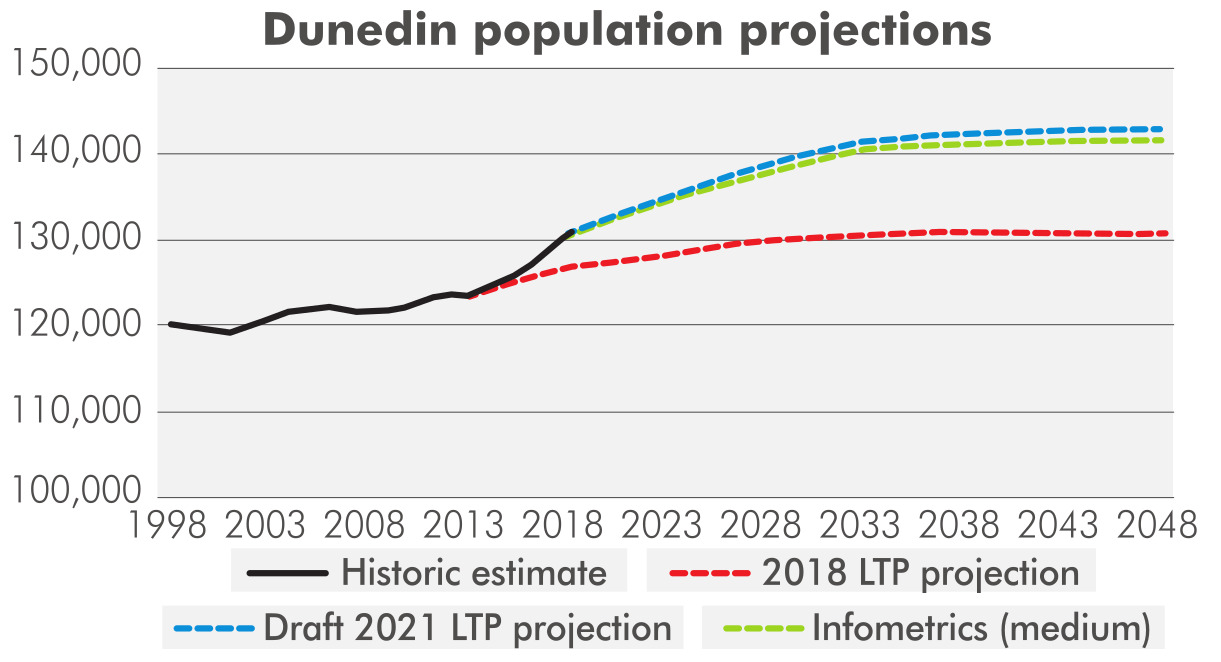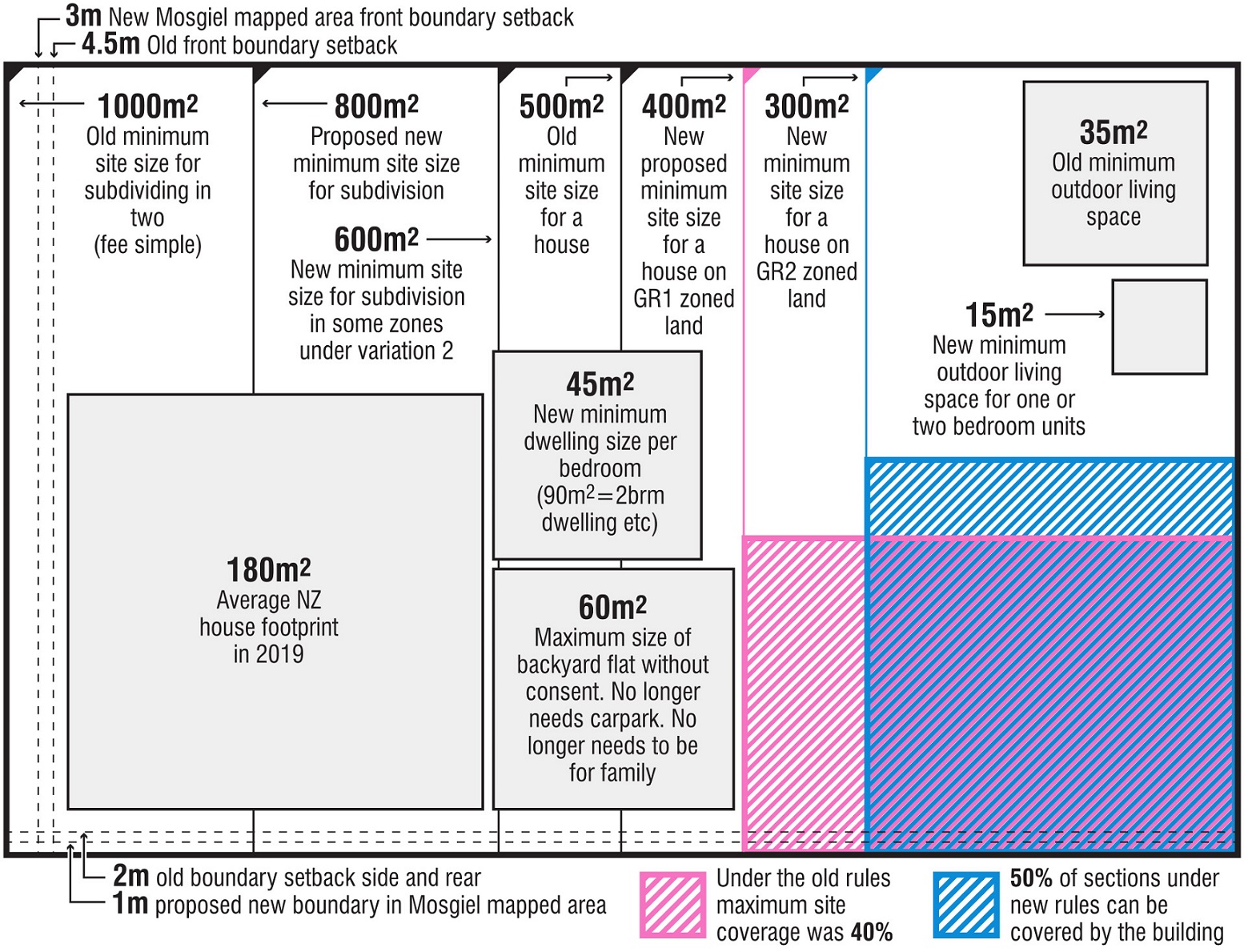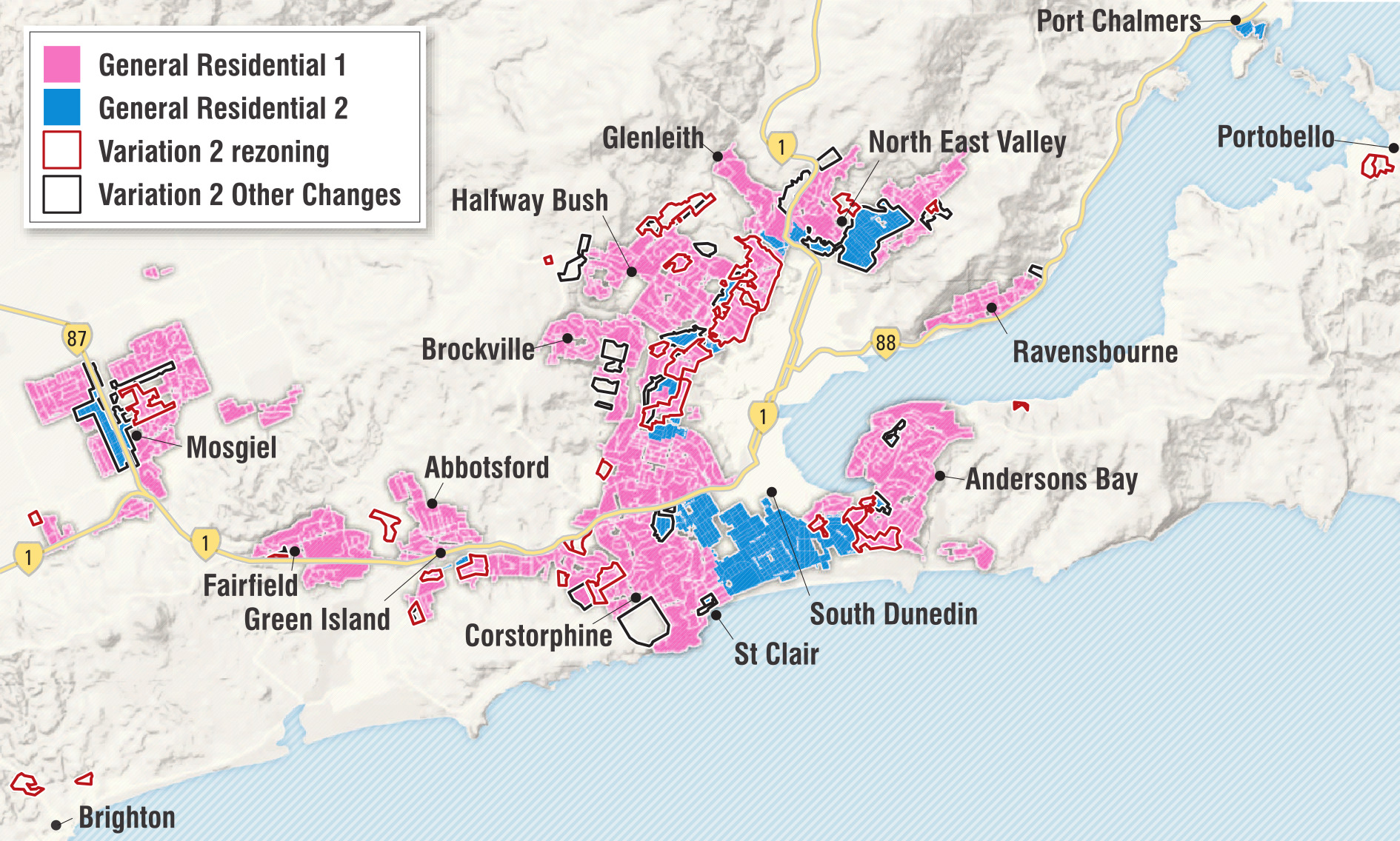
Ziggy Lesa has a problem and questions, lots of questions, but few answers.
He and his wife have bought a property in Andersons Bay, Dunedin, to house their eldest son and his wife. Both returned from overseas in the early days of the Covid-19 pandemic without funds to buy a home of their own in the city’s over-heated, super-tight housing market.
Now their second son and his expectant wife have also come home, from Australia. They too are struggling to afford to live here, paying $350 a week to rent a one-bedroom flat.
"So, we thought maybe we could subdivide this property and put a two-bedroom unit on the back," Lesa, who is warden of the tertiary student hall of residence Cumberland House, says.
The Lesa family were encouraged to consider subdividing by publicity about proposed variations to the Dunedin City Council’s Second Generation District Plan (2GP), intended to address Dunedin’s housing shortage. After all, their Andersons Bay property is 867 square metres — too small to subdivide under the old 1000sqm rule but fine under the proposed variation 2, which in some circumstances allows sections as small as 300sqm to have dwellings with one potential bedroom for every 45sqm of the site.
Lesa went to the council website to figure out what he could do. That is when his questions grew rather than diminished.
"Just when I thought I’d got something sussed, I would read something else that seemed to contradict it," he says.
"How much land do I need to consider building? What are the rules, such as how far from the boundary are you supposed to build? Who do I go talk to about what we want to do to find out if we’re allowed to do it?"
On Thursday, public submissions closed on the council’s 2GP variation 2 proposal. Variation 2 is a late attempt to tackle Dunedin’s awful housing crisis.
Dunedin’s population has been growing — itself a generational shift — much faster than anticipated. That growth is expected to continue. In a decade there will likely be 10,000 more Dunedin residents than today.

That lack of supply has pushed up the price of houses. During the past year, the median house price in Dunedin has jumped from $548,000 to $618,000, a 13% increase.
The median house now costs more than seven times the median annual income — well beyond the reach of many.
Those forced to rent while trying to save for a deposit are often on a hiding to nothing. Median rent in Dunedin is about $421 a week — 25% higher than what is considered the upper limit of housing affordability for those on an average income.
Variation 2 aims to tackle this untenable situation by creating denser urban housing in Dunedin, council development manager Dr Anna Johnson says. Planning rules would be loosened in the hope it would encourage Dunedin property owners to subdivide their sections or build extra dwellings on their land. The proposal would allow properties zoned General Residential 1 (GR1) that had at least 800sqm of land to be subdivided. A house could be built on GR1 land of at least 400sqm. On GR1 land of at least 500sqm, it would be possible to build two houses if they were a single building or a duplex. Single storey family flats of up to 60sqm are already possible on GR1 land under the new 2GP. Variation 2 would further loosen that by removing the requirement to provide carparking, allowing separate service connections and allowing the flat to be rented to non-family members.
Variation 2 allows even more latitude on what would be newly zoned General Residential 2 (GR2) land. Many GR2 properties as small as 600sqm could be subdivided. Constraints on what could be built on GR2 land would simply be one habitable room (potential bedroom) per 45sqm of site area, or per 100sqm where there is a wastewater constraint.
"Variation 2 provides some new land for housing but also for infill housing across many properties, smaller section sizes and the development of smaller, more affordable homes," Dr Johnson says.
"Over 17,000 residential properties could theoretically subdivide or accommodate additional dwellings."
How then to help out the city, alleviate the housing shortage and reduce your mortgage all at once?
With difficulty and patience, those already on that road say.

"It’s taken a lot of work ... All because we were 24sqm short for the 1000sqm rule," Young says.
"It’s great the council are changing the rule, but for us it’s not any help."
It has taken two years. In a fortnight, they will request building consent for what would be their new home on the back half of the original property. They will rent the house they are now in.
Young’s words of wisdom to those considering subdividing: everything costs a lot more than you expect and you need a lot of patience.
"We’ve had to extend our mortgage to cover the costs.
"You can’t get an ABA number without getting building consent. So, you’re in this trap of having to get a quote for services and then pay that money, plus GST, plus 25% to the council, which holds that money while you are building and have paid for your services, again. Then they’ll release your money.
"So, we’ve got about $15,000 tied up at the council that we can’t touch until everything is finished."
She has some advice for the council too, if it is serious about trying to increase the number of houses in the city.
"If it was explained clearly what we needed to do at each step, it would have been really good ... It’s just not particularly clear."
Despite the cost and frustration, it will be worth it, Young believes.
"There’s extremely limited land in Dunedin. Even with the extra costs of a planning consultant, it is cheaper for us to subdivide than to buy a section.
"We really wanted to get a new home ... But obviously it helps out financially, in the long run, having an investment property."
Ray McDowell, of Wingatui, is well versed in small scale subdivisions.
"Get a bloody good surveyor," he recommends.
"And make sure you’ve crossed your t’s and dotted your i’s."
He is somewhat blunt in his evaluation of the council and his advice to it.
"They’ve been the hardest people you could ever deal with ... To the point that some of it is just bureaucratic c***.
"When you go in there to ask something, it would be good if they would actually give you some advice [but] ... they say, ‘you come back with an idea and we’ll tell you if it’s wrong’.
"You do get the odd one who is really good."
In the final analysis, McDowell echoes Young’s words.
"Given the price of sections, people will still come out of it on the right side."
In response to feedback that online information is not user-friendly, processes are bureaucratic and some staff unhelpful, Dr Johnson says the council "strives to provide detailed, clear information in what can be a complex process".

What difference will variation 2 make to Dunedin? Positive, negative, enough and nowhere near enough, depending on who you talk to.
The prospect of 17,000 new dwellings wedged behind, in front of and next to existing houses raises questions about quality of life in what would be those higher density suburbs.
Most people do not want to live cheek-by-jowl with neighbours and would only subdivide or build a rental unit on their property out of economic necessity, a Dunedin builder says.
"Ninety per cent would be doing it to pay off debt, otherwise they wouldn’t want to chop their section in half," the builder, who asked not to be named, says.
"A lot of us have the opinion that if you upset the apple cart [with council] things get harder," he explains.
Removing the requirement to provide carparking for a rental unit built on the family property could have a detrimental effect, Alex King, co-president of the Bus Users Support Group Otepoti, says.
Those less mobile could have trouble maintaining relationships with friends and family if streets clogged with parked cars made it too difficult to find nearby parking when trying to visit, King suggests.
On the other hand, he says, less off-street parking could encourage more people to use public transport instead.
But that would only be successful if bus stops were handy to all of the new housing, he adds.
"We do have some concerns that while the council has looked at this issue, in some cases it looks like they have only ensured bus stops are close enough to the access point to a housing area. It might be a five minute walk from one edge of a suburb but a 20 minute walk if you live on the far side."
Dr Johnson says more new and smaller housing will help provide for the city’s ageing population and growing number of one and two-person households.
"Effects on neighbourhood amenity will continue to be managed through 2GP rules, and we aim to encourage increased development in parts of the city best placed to accommodate it."
But, adds Dr Johnson, there need be no fear of 17,000 new dwellings within the existing residential footprint. The council’s modelling suggests variation 2 will only add 2500 to 3000 new homes. That is in addition to 3400 the 2GP is already expected to provide during the next 10 years. Given the demand is expected to be 500 dwellings per year, that is enough to meet demand.
That is nowhere near enough to make Dunedin houses affordable, someone in the property industry, who asked not to be named, says.
Christchurch, where the median house price is $520,000, proves new land, not greater density, is the best solution, he says.
"We need a lot more greenfield development land made available."
What is preventing that happening is a reluctance on the council’s part to pay for the infrastructure required for new developments, he says.
But new housing would mean new ratepayers, which would take care of the cost, he believes.
"What we need is more vision."
Others agree.
"Lots of people realise we’ve really dropped the ball," the Dunedin builder says.
"The biggest problem is a lack of infrastructure for new subdivisions."
Dr Johnson says the council has followed central government requirements to provide enough housing development opportunities.
Housing affordability and house prices are affected by a wide range of factors, of which availability of land is only one, she says.
She does, however, think new greenfield housing will be needed to meet long-term population growth.
Planning for this will be done as part of an update of the Spatial Plan, which is due for review, she says.
"Initial work has already started but the project will be formally initiated later this year."
As to the variation 2 denser housing proposal, there will be a further submission period in the middle of the year and then a hearings process. Decisions will be released late this year or early-2022.
That is not quite quick enough for Lesa and his wife, nor their younger son, his wife and their unborn child.
"The baby is due in November. We’d like to have a two-bedroom unit on the back of the property before then."
Comments
Housing density needs to increase close to the central city. Having individual outdoor space in all instances should not be a requirement. Many people live close to parks and other public spaces that can easily access and enjoy just as readily and more extensively than a 15m2 patch of grass in their own backyard.
Our Town Belt with associated parks, Woodhaugh and the Botanical Gardens, Chingford, Logan and Bayfield Parks, as well as the coastal strip are great places for outdoor community activities rather than staying home to mow the lawn and trim the hedge. The city would be better served by the council expanding the public amenities within the city and increased density rather than greenfields expansion with all it's associated additional infrastructure spend.
Increased density would also contribute to the replacement of failing water, sewer and stormwater that will need replacing regardless.
Higher density reduces the cost of services, the need for private transport; increases the viability of public transport, utilisation of public space; is good for a vibrant CBD, both business and arts.
It's past time the council realised their over control is the problem.
You are right about council building services people. Most are ver unhelpfully yet we are paying their wages.
You don't necessarily need to subdivide to build another dwelling. Depends on how much land is covered by dwellings. Usually there is a max area of land you can have a dwelling such as a garage, shed, 2nd house.
Get someone such as a surveyor, house designer etc. Will cost but well worth the expense.












